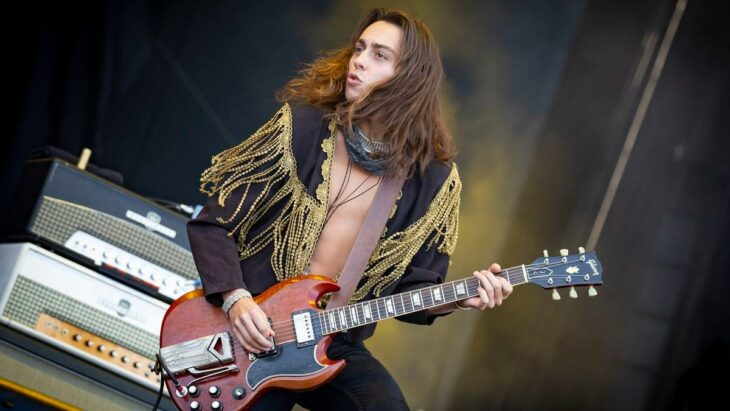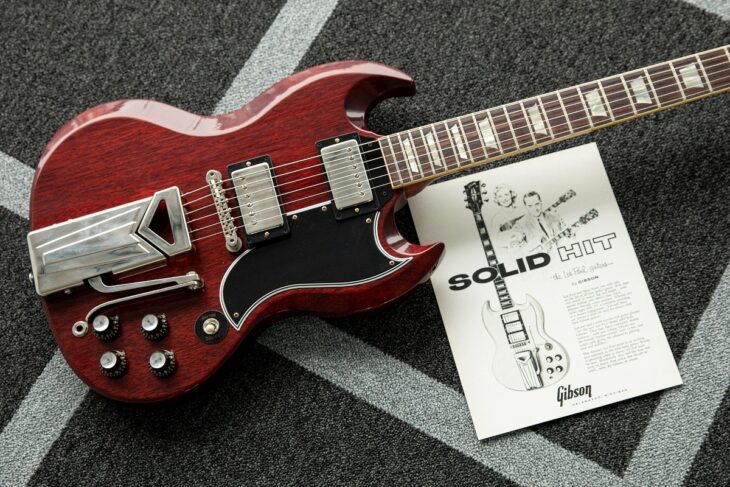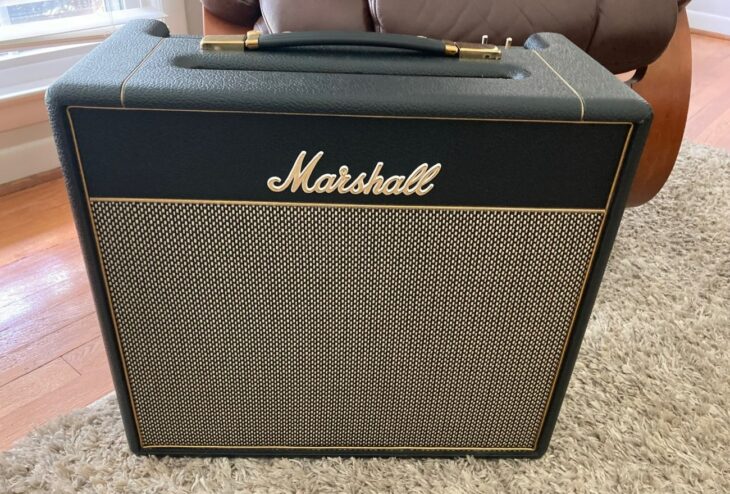Greta Van Fleet is surely the 2010s’ foremost proponent of old-school classic rock. The Kiszka brothers (and their Bonham-esque drummer, Danny Wagner) exploded onto Spotify playlists and stages the world over in 2017, brandishing an unapologetically vintage brand of rock and roll, complete with flared jeans, long hair, and warm, powerful Gibson-and-Marshall tones.
I remember seeing GVF in a co-headlining tour with The Struts. Unlike most other rock shows I’d been to in recent years, the crowd was young, excited, and ready for an evening of rock and roll. This was back in 2018, but it felt like stepping into 1978.
There are many pieces of the Greta Van Fleet puzzle, but fortunately for most fans, their affection for classic rock extends to an affinity for relatively straightforward gear choices. Jake Kiszka, the lead guitar player, runs a relatively straightforward rig that any guitar-playing fan can emulate with a modest budget.
Table of Contents
Greta Van Fleet Guitars

Jake Kiszka’s main guitar over the years has been a 1961 Gibson Les Paul. Keen-eyed readers will, at this point, point out two things: one, Gibson didn’t release a Les Paul in 1961. Two, Kiszka’s guitar looks, and sounds, like an SG. What gives?
The story goes that, facing flagging guitar sales in the late 1950s, Gibson Guitars sought to update their flagship model to address some market concerns. First of all, to reduce the weight of the guitar, they made the body thinner and lighter.
Secondly, to improve upper-fret access, they added a second cutaway and moved the neck joint down three frets.
This guitar was introduced in 1961, but Les Paul, who designed the original Gibson guitar, hated the new model so much that he demanded Gibson change the name. Gibson obliged, rechristened the new model the “SG” (for Solid Guitar) and the rest is rock and roll history.
Kiszka tours with two original ‘61 Les Pauls and a backup Gibson SG. For this tone, I’d recommend that you avoid going out to buy a 60-year-old Gibson. The reissue is an excellent instrument.

However, at a more competitive price point, you have the ‘61 SG (with vibrola, for sustain and vibrato).
Alternatively, the Epiphone ‘61 SG comes in a similar cherry color, complete with vibrola system, at a quarter of the price of the Gibson model.
Kiszka’s guitars are all stock, but modern Gibson pickups are very different from those of the 1960s. Gibson Classic pickups are excellent, but if you want to get a pickup upgrade for your Epiphone SG, the Seymour Duncan ‘59 low-output humbucker is probably your best bet.
Greta Van Fleet Amps
Unsurprisingly, given Greta Van Fleet’s musical palate, Kiszka’s choice of amp is the tried-and-tested Marshall. When I saw Greta Van Fleet live on their first Australian tour, he was using a Marshall Astoria combo amp with 4×12 extension cabinets.
These days, Kiszka has added a JCM800 stack and a Selmer combo amp to his onstage rig, but the cornerstone of his tone is still the vintage Astoria.
The Astoria is out of production, but the key to the sound of the Astoria was the rare, for Marshall, use of KT66 tubes. These had a less aggressive midrange than most Marshall tubes. To my ears, the Greta Van Fleet sound is a little more mid-ready and driven than the clean, warm sound of the old Astoria, so I think most players would be relatively safe using a clean-to-crunch Marshall combo such as one from the studio series.
My pick would be either the Studio JTM or the Studio Vintage. I own an SV20C and it nails the edge-of-drive classic rock Marshall tone.

If, however, you’d prefer an amp with a more even volume taper or just a less ear-shattering amount of volume, I’d recommend the Blackstar HT-5R.
Greta Van Fleet Amp Settings
Because Greta Van Fleet is a single-guitar band, Jake Kiszka has plenty of sonic room to cover with his amp settings. His Astorias are set as below:
Master: 4
Surprisingly, Kiszka does not rely on tremendous volume to drive his amp.
Edge: 6
The “Edge” knob is, for all intents and purposes, presence. It adjusts overall brightness.
Gain: 2.5-3
Kiszka’s tone is not overly distorted, so he sets his gain relatively low.
Bass: 9-10
Kiszka’s guitar and amp combo is naturally very bright, which he tames by setting his boss EQ higher than you’d expect.
Mids: 6.5
You want a slight spike in midrange to achieve the spank and snap of Kiszka’s playing.
Treble: 5.5
Remember that the amp and guitar combo are naturally bright, so you don’t need too much treble.
Note that, if you’re using a Super Lead-style amp, you’ll want to “bridge” between your Normal and Bright channels and use the volume 1 and 2 knobs to control your tone.
Greta Van Fleet Pedals
Live, Jake Kiszka deploys a range of effects, including a few modeling units like the HX Stomp and Fractal Audio FM3.
However, most guitar players don’t need Kiszka’s three drawers’ worth of effects units to get in the ballpark of his tone.
First and foremost, Kiszka’s drive tone comes primarily from his Jext Telez Range Lord. This pedal emulates the character of the Dallas Arbiter Rangemaster, a now-extinct treble booster pedal with a distinct tone courtesy of a germanium transistor.
For my money, the Electro-Harmonix LPB-1 Boost is probably the best affordable emulation of this sound.

Alternatively, the Catalinbread Naga Viper is an extremely close copy of the Rangemaster circuit.
For reverb, Kiszka uses the tried-and-tested EHX Holy Grail, and for occasional octave effects, uses a Micro POG.

Of these, the two key effects are the Rangemaster-style boost and reverb.
Final Word
Jake Kiszka’s guitar tone is relatively straightforward and very easy to appreciate. It’s a warm, sassy, classic rock tone dripping with attitude. With a good SG-style guitar, a Marshall combo, and the right clean-ish boost for your Marshall, you can power your way through “Highway Tune” to your heart’s content.

